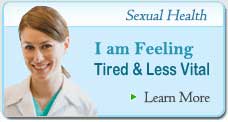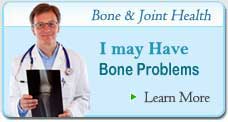» Anti-Aging
» Bones Joints & Muscle Health
» Cardiovascular Health
- Hip And Knee Joint Replacements: The Infection Risks
- All About Excessive Sweating & How To Stop Hyperhidrosis Sweats Ruining Your Life
- Should You Be Worried About Diabetic Retinopathy? Find Out If You Are Developing & How To Prevent It
- Must Know Lyme Disease Information - You Might Be Surprised To Find Out...
- Do You Have Sleep Apnea? Find Out What It Is And How To Treat It
» Chronic Pain Management
» Dental Health & Wellness
» Digestive Health Problems
» Health Care
» Mental Health
» Sexual Health
» Skin Care

Strokes – Prevention, Symptoms And Stroke Treatments
Most people think of a stroke as something that only happens to older people and those that have additional major health problems. Everyone is at risk of a debilitating stroke, and only by understanding the causes, symptoms and treatments can we hope to prevent them.
Strokes are a disease that does no discriminating.
The Types of Strokes
There are two major categories of strokes and these are then broken down into additional minor categories.
The major type of stroke is called Ischemic, claiming eighty-five percent of all strokes that occur and most commonly occur in the elderly community.
This type occurs when a brain blood vessel is blocked by excessive buildup of plaque in the walls of the arteries or because of a blood clot.
Ischemic stroking can occur as embolic and thrombotic.
Thrombotic strokes take place deep inside the brain and are caused by damaged or infected cerebral arteries blocked by plaque build up, blocked blood vessels, sickle cell anemia, atherosclerosis or other medical conditions.
The symptoms for thrombotic come on gradually.
When pieces of blood clots break off this may cause an embolic stroke.
These clots may also be caused by other fragments floating through the blood vessels such as air bubbles, fat or cancer cells.
As opposed to the thrombotic type of stroke, this type occurs away from the brain. Due to irregular flowing blood, people suffering from atrial fibrillation or irregular heart beating may be at a higher risk for stroke.
There are medications that can help lower the possibility of this occurring for those people.
The second major stroke type are hemorrhagic strokes. These are caused by brain artery ruptures and leakage.
Even though they occur less frequently than Ischemic strokes, they can cause more deaths because of the speed of the hemorrhaging. The causes for this type of stroke are typically head trauma; weakness in blood vessel areas and severe uncontrolled high blood pressure.
The symptom patients will experience with this type is a feeling of severe head pressure. Hemorrhagic strokes are divided into two sub-categories, subarachnoid and intracerebral.
If a near surface artery of the brain ruptures and blood fills the area between the skull and the brain, this is considered a subarachnoid hemorrhage.
The main symptom is a severe, sudden onset headache often accompanied by nausea.The victim of this type of stroke may fall into unconsciousness very quickly and death can occur suddenly because of the increase in brain pressure.
Anyone of any age may be affected by this type aneurism.
An intracerebral hemorrhage occurs when a weakened or inflamed blood vessel deep in the brain ruptures and spills blood on the brain tissues surrounding the area.
This will cause damage to the brain area in which it is occurring and severe pressure will be felt in the head. Because of the spilling blood, surrounding tissues are damaged because of the lack of blood to those areas.
This type of cerebral aneurysm is most commonly caused by uncontrolled high blood pressure. It is often fatal within minutes, the victim can fall down unconscious and quickly passes.
There are “mini strokes” called transient ischemic attacks, commonly called TIAs, where blood flow is decreased to areas of the brain temporarily. These do not cause any permanent damage or lasting effects and can last sometimes up to five minutes.
During the time of the attack, you may feel numbness on one side of your body, a severe headache, blurred vision and balance problems.
The blood clots then just as suddenly as they occur, dissolve.
Even though these attacks do not cause permanent damage, they are signals that there may be a narrowing of the blood vessels and further problems are imminent.
Emergency medical attention should be sought immediately. If you experience these symptoms it can be an indication that a more serious stroke may occur at any time.
Stroke Treatments
If you or anyone around you shows any stroke symptoms, call 911 immediately, seconds can make all the difference in the world between life, death and debilitation.
At the emergency room, they will need to determine the type of stroke the you are suffering from and appropriate treatment should be started within three hours from the onset of the attack. Usually you will be kept in the hospital overnight or longer depending on the severity of your stroke.
A CT scan must first be done to determine the cause of the stroke. If a blood clot is the culprit, there are clot-dissolving drugs that can break up the clot, therefore reinstating blood flow to the surrounding areas.
This medication is only helpful within the first three hours from the beginning of the stroke.
If the cause is bleeding, this drug cannot be used because it would promote additional bleeding making the problem worse.
Stroke Prevention Strategies
Prevention is the best course of action. If you have medical conditions that may be precursors to a stroke consult your doctor as blood thinners such as Pradaxa or Coumadin can help prevent blood clots.
Also, for conditions less severe or for the general community, often a baby aspirin is recommended.
If you have high blood pressure, you need to work to bring it under control with either medications, weight loss or alternative remedies.
If a clogged blood vessel is discovered before damage is done, skilled professionals may be able to find the vessel, open it and break up the plaque clogging it or remove it.
For hemorrhagic patients, surgeons can remove the draining blood and make repairs to the blood vessels.
How To Recover After A Stroke
Following a stroke, there are several treatments that may be necessary. In order to return to full or nearly full function and to prevent the possibility of future strokes, long-term treatment will be very helpful.
How much time is required for recovery depends on the person and the severity of the stroke. Some of the treatments required may be speech therapy, physical therapy and occupational therapy.
Remaining as active as possible will help reduce the recovery time and speed rehabilitation.
Often, repetition of tasks and communication strategies are necessary depending on the extent of the damaging effect on your speech and motor control.
If you have a severe stroke, often you may have no awareness of where you are and judgment making abilities are lost; therefore, a safe, secure environment is needed.
Additionally you may also have bowel and bladder control problems. In this case, often adult day care, a nursing home or in-home care can be beneficial for at least a short time until their normal functioning returns, if it returns.
Counseling may also be required for the family of the patient to help understand what has happened, what to expect and what they can do to help the stroke sufferer.
Sometimes time and patience is all it takes. Remember to treat the sufferer with respect and love, regardless of their abilities or lack of abilities.
» Discover A Powerful Natural Solution to Improve Cardiovascular Health
You May Also Find Informative:
Aging Fit - Health Research & Information
Better Health. Energy. Quality.






